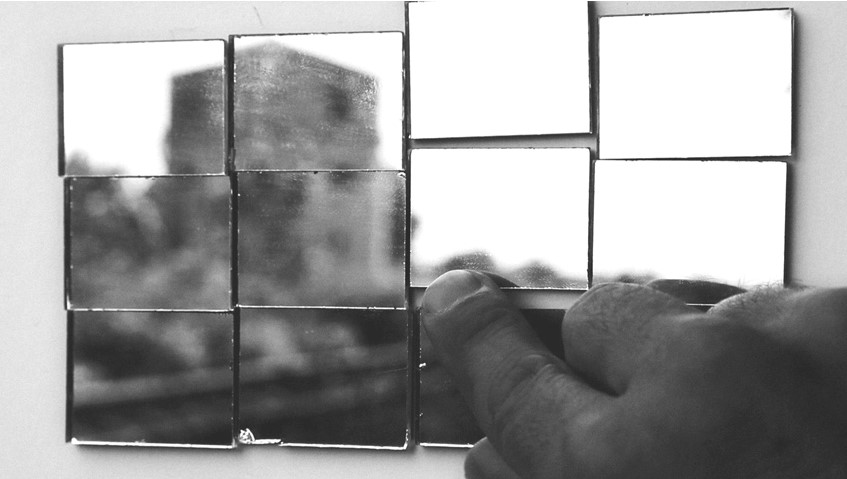What Could/Should Curating Do? is proud to present Crossroads of the View, the culminating exhibition of the 2018 WCSCD program.
Exhibition Opening: April 16, 2019, 6 pm
Exhibition Duration: April 16 through April 19, 2019, from 5–10 pm during the Days of Belgrade manifestation
Venue: Nebojša Tower
CROSSROADS OF THE VIEW
Various tracks of curatorial interpretation regarding the video work by Vladimir Nikolić, Train Passing (2012).
Curators: Neva Lukić (Croatia/The Netherlands), Milena Jokanović (Serbia), Teodora Nikčević (Montenegro), and Zohreh Deldadeh (Iran).

How many different interpretations can one artwork have? What happens when the artist’s views intersect with the curator-interpreter’s views? When does the artwork become a document of the past?
By exploring the different possibilities for the interpretation of one work of art, four international curators will pose their differing views of the video work by Vladimir Nikolić, Train Passing (2012). By projecting the video for the first time in the location where it was shot, and which is now being completely transformed—the physical train tracks in front of Nebojša Tower in Belgrade are now being removed—the curators have inspired the artist to think about the transformation of this space and the passage of time through a new series of photographs (2019). In the end, only Nebojša Tower and the video work themselves remain as the “meeting spot” for these different views; signs of the past that still linger in the present.
During the exhibition, guided tours and public talks will be organized, inspired by the exhibition itself, the permanent display within Nebojša Tower, and the current transformation of the area around the Tower. A catalogue will also be available to visitors, which includes texts from each of the curators, exploring their different viewpoints.
More details:
The initial idea for the project developed out of an interest in disrupting the commonplace group exhibition process wherein many artists are assembled by one or two curators. In this case, there are multiple curators dealing with just one artist, and even further, with just one of the artist’s works. There is great potential in this situation to offer the viewer different vantage points with regard to the artwork, opening up the many questions and possible meanings that can be read by the curatorsin a single work of video art. This conceptual frame examines how heterogeneous approaches to exhibition-making and interpretation could influence and be embraced by audiences.
The exhibited work is Train Passing (video, 3’48’’; 2012), in which the artist Vladimir Nikolić documented the passing of trains by Nebojša Tower within the Belgrade Kalemegdan Fortress. The work is a reference to the Arrival of a Train at La Ciotat, which the Lumière Brothers made in 1895. The goal is to present this video work at the site (Nebojša Tower) where it was made, but it is important to point out that the artist didn’t intend the work to function in a site-specific manner. Rather, it was always meant to be an independent work that can be exhibited in different exhibition spaces. Yet, by exhibiting the work in Nebojša Tower, the work will gather another layer of meaning, experienced as a kind of „post-site-specific“ work, where the video represents the past and the Tower as both history and the physical present. Next to the video will be presented a new series of photographs related to the area around Nebojša Tower where the video was shot, pointing to an additional context—the physical train tracks next to the Tower, which are currently being removed, consequently changing the entire surroundings. This reality further transforms the artist’s video into a document of the past.

Following the ideas embedded within the exhibition, audience members are invited to follow different tracks, explore various points of view—whether the one provided by each of the curators, or the artist’s own views. On the one hand, departing from a more purely subjective perception of the world, the artist questions the history of this particular vantage point as represented in the artwork, which also involves the reference to the development of moving images by the Lumière Brothers. Through the method of appropriation, the multilayered meanings in the work are developed consciously. On the other hand, the work Train Passing is trespassed by various curatorial approaches, as the curators interpret the work from various viewpoints.
This exhibition is part of the final project of What Could/Should Curating Do? 2018 in collaboration with the PE Belgrade Fortress.
About WCSCD:
‘ŠTA KUSTOSIRANJE MOŽE/TREBA DA BUDE?’ // WHAT COULD/SHOULD CURATING DO? – WCSCD is the first international course for emerging curators to take place in Belgrade, Serbia, founded in 2018 by Biljana Ćirić (independent curator based in Shanghai). The program aims to situate curatorial practice within the specific contextual framework of the region, while also providing insights to the wider international framework related to exhibition-making practices on both a theoretical and practical level.
The program has been supported by following partner institutions: project patron: Wiener Städtische; partners: The Museum of Contemporary Art Belgrade; EVA International—Ireland’s Biennial of Contemporary Art; and Zepter Museum, among others. The project is supported by the Istituto Italiano di Cultura Belgrado; the Embassy of the Kingdom of the Netherlands in Belgrade; the Austrian Cultural Forum; Heinrich Boell Stiftung; Hestia Art Residency & Exhibitions Bureau and EUNIC Serbia among others.
Project contact: what.could.curating.do@gmail.com

